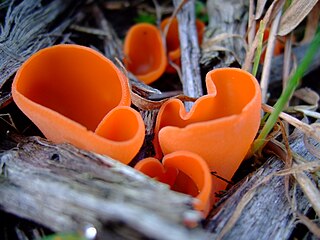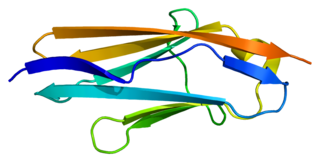Related Research Articles

Pezizomycotina make up most of the Ascomycota fungi and include most lichenized fungi too. Pezizomycotina contains the filamentous ascomycetes and is a subdivision of the Ascomycota. It is more or less synonymous with the older taxon Euascomycota. These fungi reproduce by fission rather than budding and this subdivision includes almost all the ascus fungi that have fruiting bodies visible to the naked eye.
In mathematics, the Picard group of a ringed space X, denoted by Pic(X), is the group of isomorphism classes of invertible sheaves on X, with the group operation being tensor product. This construction is a global version of the construction of the divisor class group, or ideal class group, and is much used in algebraic geometry and the theory of complex manifolds.
The Military Intelligence Hall of Fame is a hall of fame established by the Military Intelligence Corps of the United States Army in 1988 to honor soldiers and civilians who have made exceptional contributions to military intelligence. The hall is administered by the United States Army Intelligence Center at Fort Huachuca, Arizona.

Neolecta is a genus of ascomycetous fungi that have fruiting bodies in the shape of unbranched to lobed bright yellowish, orangish to pale yellow-green colored, club-shaped, smooth, fleshy columns up to about 7 cm tall. The species share the English designation "Earth tongues" along with some better-known fungi with a similar general form, but in fact they are only distantly related.

Homeobox protein Hox-D4 is a protein that in humans is encoded by the HOXD4 gene.

Striated muscle preferentially expressed protein kinase, in the human is encoded by the SPEG gene, a member of the myosin light chain kinase protein family. SPEG is involved in the development of the muscle cell cytoskeleton, and the expression of this gene has important roles in the development of skeletal muscles, and their maintenance and function. Mutations are associated with centronuclear myopathies a group of congenital disorders where the cell nuclei are abnormally centrally placed.
Cucujomyces is a genus of fungi in the family Laboulbeniaceae. The genus contain 14 species.
Misgomyces is a genus of fungi in the family Laboulbeniaceae. The genus contain 4 species.

Herpotrichiellaceae is a family of ascomycetous fungi within the order Chaetothyriales and within the class Eurotiomycetes. It contains 16 genera and about 270 species. The type genus of the family, Herpotrichiella, is now synonymous with Capronia.
Leotiomyceta represents all the filamentous ascomycete fungi (Pezizomycotina), excluding the classes Pezizomycetes and Orbiliomycetes. It is well supported in several studies comparing DNA sequences in fungi. It has originally been proposed as a superclass but more recently was proposed as a rankless taxon for any well supported group above class. Rankless taxa do not strictly follow the rules for taxonomic classifications in plants and fungi (ICBN) and therefore these names are informal, although they appear to reflect natural groups.
In mathematics, Picard–Lefschetz theory studies the topology of a complex manifold by looking at the critical points of a holomorphic function on the manifold. It was introduced by Émile Picard for complex surfaces in his book Picard & Simart (1897), and extended to higher dimensions by Solomon Lefschetz (1924). It is a complex analog of Morse theory that studies the topology of a real manifold by looking at the critical points of a real function. Pierre Deligne and Nicholas Katz (1973) extended Picard–Lefschetz theory to varieties over more general fields, and Deligne used this generalization in his proof of the Weil conjectures.
The 1916 Birthday Honours were appointments by King George V to various orders and honours to reward and highlight good works by citizens of the British Empire. The appointments were made to celebrate the official birthday of The King, and were published in The London Gazette and in The Times on 3 June 1916.

Cordieritidaceae is a family of fungi in the order Cyttariales. Species in this family are saprobes or lichenicolous.

Passalora is a genus of fungi in the family Mycosphaerellaceae. It has about 250 species.
References
- ↑ Lumbsch, H. T. and S.M. Huhndorf (ed.). "Myconet". Archived from the original on 2009-03-18.
{{cite web}}:|author=has generic name (help)